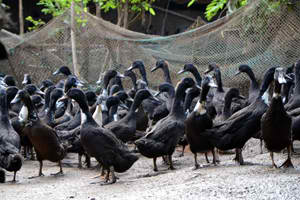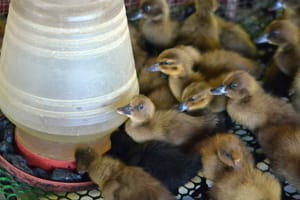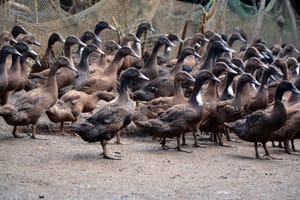In 2010, the duck industry was very profitable and vibrant, with an estimated population of 10.8 million head. Now, challenges are weighing it down. Decline in the number and quality of breeders and lack of stable supply of ready-to-lay pullets are among the major factors contributing to the duck industry’s downtrend. Application of various new technologies in housing and feeding seemingly failed to address the problem.

Experiences of the Duck Research Center of the Livestock Research Institute in Taiwan have shown significant improvement in the overall productivity of layer ducks through organized breeding and selection that is complemented by proper nutrition and management. Taiwan experience suggests that innovative S&T interventions lead to better production performance in terms of increased egg production and egg weight over time. Application of farm level S&T interventions through the Philippine Council for Agriculture, Aquatic and Natural Resources Research and Development of the Department of Science and Technology’s (DOST-PCAARRD) Duck Industry Strategic S&T Program (ISP) is now showing positive accomplishments relative to the program targets.
Ensuring vibrant and sustainable Philippine duck egg industry requires development of signature Philippine Mallard Duck (PMD) breeds (with 70% egg production and average of 65 g egg weight) through application of breeding, feeding, production management, and duck egg processing technologies at the farm level. Adoption of efficient and effective promotion and marketing strategies for duck egg products by the industry is also necessary.
Duck ISP accomplishments

The Duck ISP is generally geared towards addressing the declining of duck egg production trend that started in 2004. The ISP, therefore, focuses on the development of genetically superior breeder ducks that can increase egg production rate from 55% to 70% and maintaining egg weight consistently at 65 grams.
The program also aims to develop and establish breeding true-to-type PMD populations in private commercial farms. In partnership with the National Swine and Poultry Research and Development Center – Bureau of Animal Industry (NSPRDC-BAI), the S&T intervention on breeding and selection led to the development of breeding true-to-type PMD. The improved purebred PMD line annually added 50 eggs per duck with consistent egg weight of not lower than 65 grams a piece that is acceptable by the balut and salted egg processors.
Compared with the traditional rearing of egg-type mixed breed of ducks, this breakthrough can result in additional income of at least ?300 per duck/year without altering any cultural management practice.
Supplies of these improved PMD commercial lines will be available mid-2016 in Central Luzon and CALABARZON regions through the private duck raiser partners now involved in commercial duck breeding.
Sustainability of the developed PMD breeds will be complemented with the development of feeds and feeding systems for the improved PMD by the University of the Philippines Los Baños (UPLB) in collaboration with Central Luzon State University (CLSU). Production of custom-mixed duck rations that uses locally available feed ingredients will ensure a stable supply of quality feeds for the duck industry.

Still in the pipeline of the Duck ISP are the projects on innovating the balut and salted egg processing methods for value addition and food safety compliance and enhancement of the market channels, pricing and distribution systems, and product promotion strategies.
The Duck ISP covers promotion of the genetically improved layer-type PMD breeders and transfer of improved breeding, feeding and production management technologies to private commercial duck producers. It will also address policy issues on duck production, trade and delivery of technical and other support services. Similarly, it will develop models of efficient marketing, and information and technology delivery systems and establish product grades and standards.
DOST-PCAARRD will showcase the duck ISP including other agri-aqua research and development (R&D) outputs on March 2-4, 2016 during the SIPAG FIESTA at its headquarters in Los Baños, Laguna.
SIPAG, a technology transfer strategy, embodies the Council’s commitment to DOST’s Outcome One in a bid to ensure that the fruits of R&D activities for the agri-aqua sectors will be a blessing for every Juan.
by Livestock Research Division, DOST-PCAARRD

